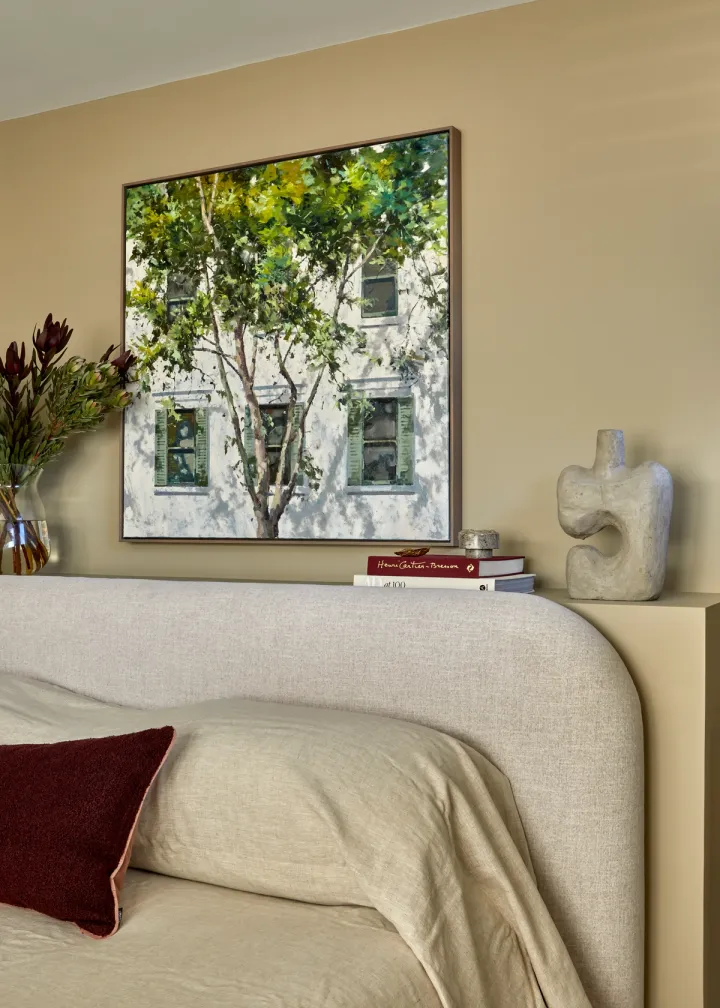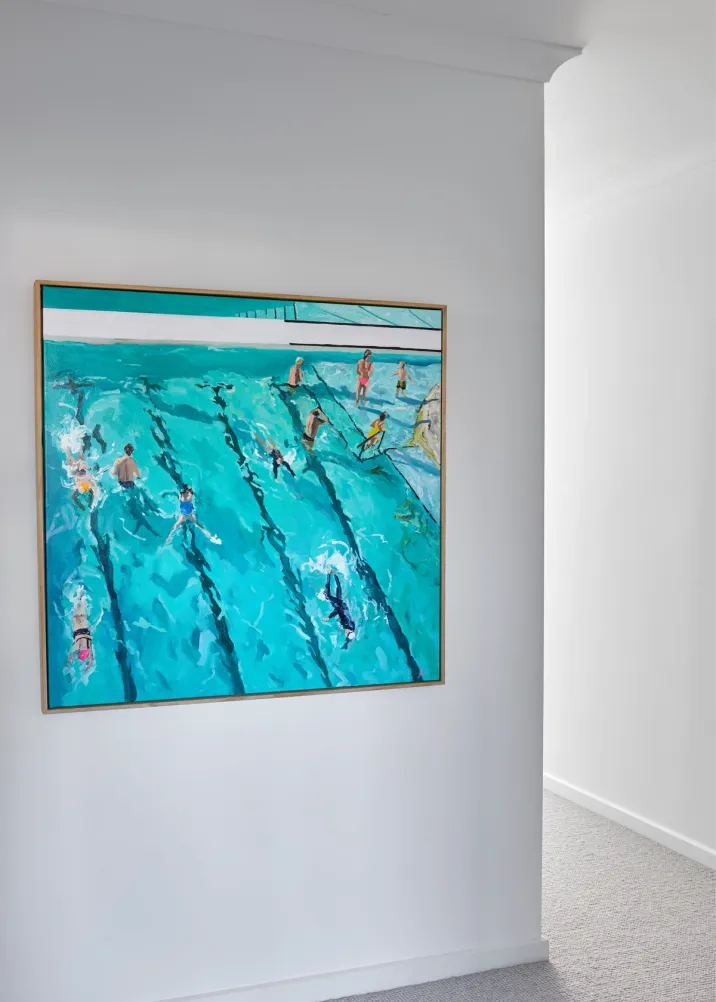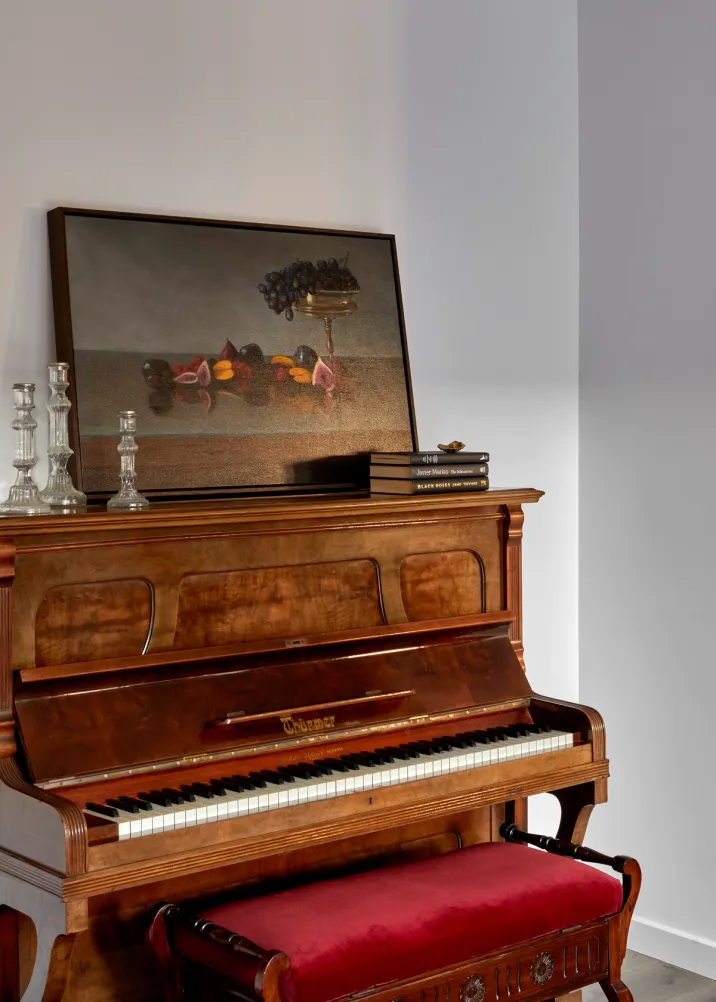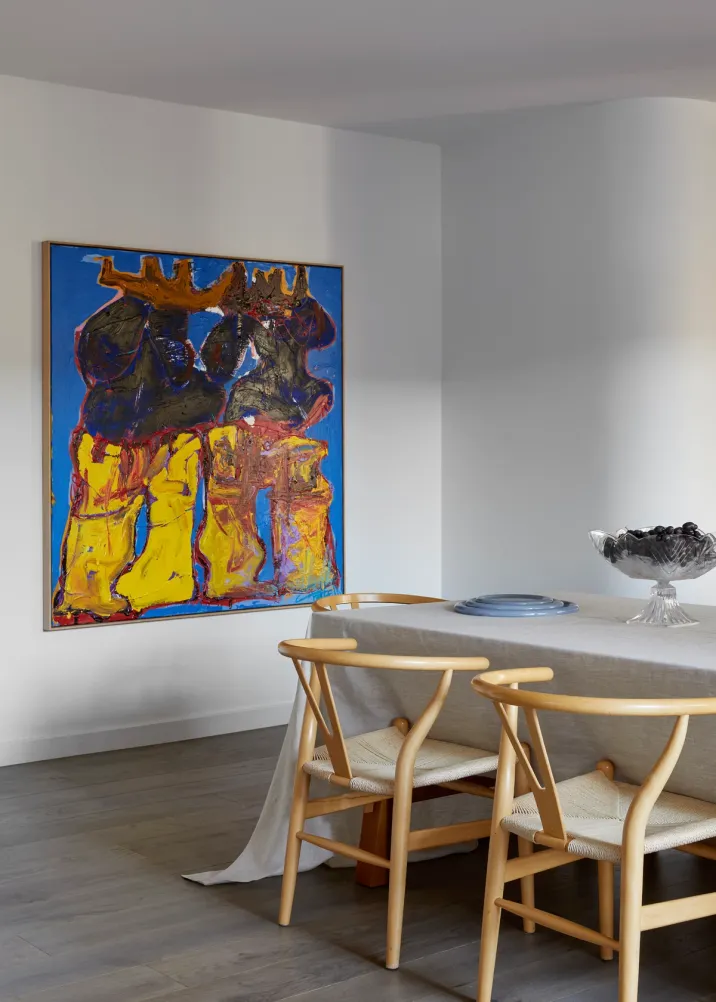
Everything You Need to Know About Starting Your Own Grown-Up Art Collection
Want to create an enviable gallery at home? There's an art to it.
Whether you're investing in your first piece of original art or looking to expand into other mediums and discover new emerging artists, there are a few key tips that will help you make smart investments and ensure that you're buying for the right reasons. We're here to share them all with you.
In terms of décor, artwork is the most personal and subjective thing you can own – what one person sees as a tranquil abstract might appear too toned down to the next person. Art draws on all our senses, from memories relating to color to tactile materials, and of course, shapes and lines that draw our eye in.
So, read on if you want to discover to begin your very own grown-up art collection. There's an art to it.

Bed linen: Coast 100% French Flax Linen Duvet Cover
Artwork: Sarah Birtles Art + Advice, Fiona Smith, Flamboyance Flamingo, 60 x 50cm, Oil on canvas.
1. Know your taste
The most important part of the art collecting process is actually understanding what you love, and why. You might be drawn to photographic works or conceptual abstracts specifically, and you should follow your natural instincts and investigate further.
Take a look at what galleries and art dealers have on offer through their websites, and start to note where your eye is naturally drawn. Then, you can begin to understand the mediums, colors, and techniques that make you feel good and go from there.

Artwork: The Toowoomba Gallery, Gina Debinski, Good Vibes and Pool Tides, 105 x 105cm, Acrylic on canvas.
2. Do the research
For anyone who is new to the art scene, it can be hard to know what's affordable and what type of art dealers and collectors admire. Of course, you'll be naturally drawn to pieces the moment you see them, but do your own research by flicking through auction catalogs and browsing gallery websites to get an idea of how much art generally costs so that you can hone in on the pieces you love and be armed with the knowledge to make a great investment.

Artwork: The Toowoomba Gallery, Llael McDonald, Summer Fruits, 94cm x 63cmh, Oil on canvas.
3. Start a conversation
Maybe you've found an artist that you're positively smitten with right now? Strike up a chat with them, or the gallery that their work is represented by. Who knows, there might be works that aren't yet for sale that you could gain access to or open up a conversation about a custom piece just for you! As well as that, having a relationship with curators and galleries in your area will allow you to have access to the newest artists.

Table linen: Bed Threads Oatmeal 100% French Flax Linen Tablecloth
Artwork: Gallery Alchemy, Gelbell, Violet, 143cm x 153cm, Acrylic on canvas.
4. Have a budget
Budget is an important part of the process unless, of course, you're Bill Gates. You'll need to determine your specific circumstances, how much money you're happy to dedicate to your collection, and how often you purchase a new piece. This will limit the works that you view somewhat, but you want to find pieces that you love and that are within your budget so that you won't have buyer's remorse later on. Keep in mind that the stage an artist is at in their career and whether you can purchase directly from them will impact prices. Also consider extras like framing, shipping and gallery fees.
Photography by Dave Kulesza.
Brighten Your Home
Enjoyed This?
Discover more about collecting and curating art.














